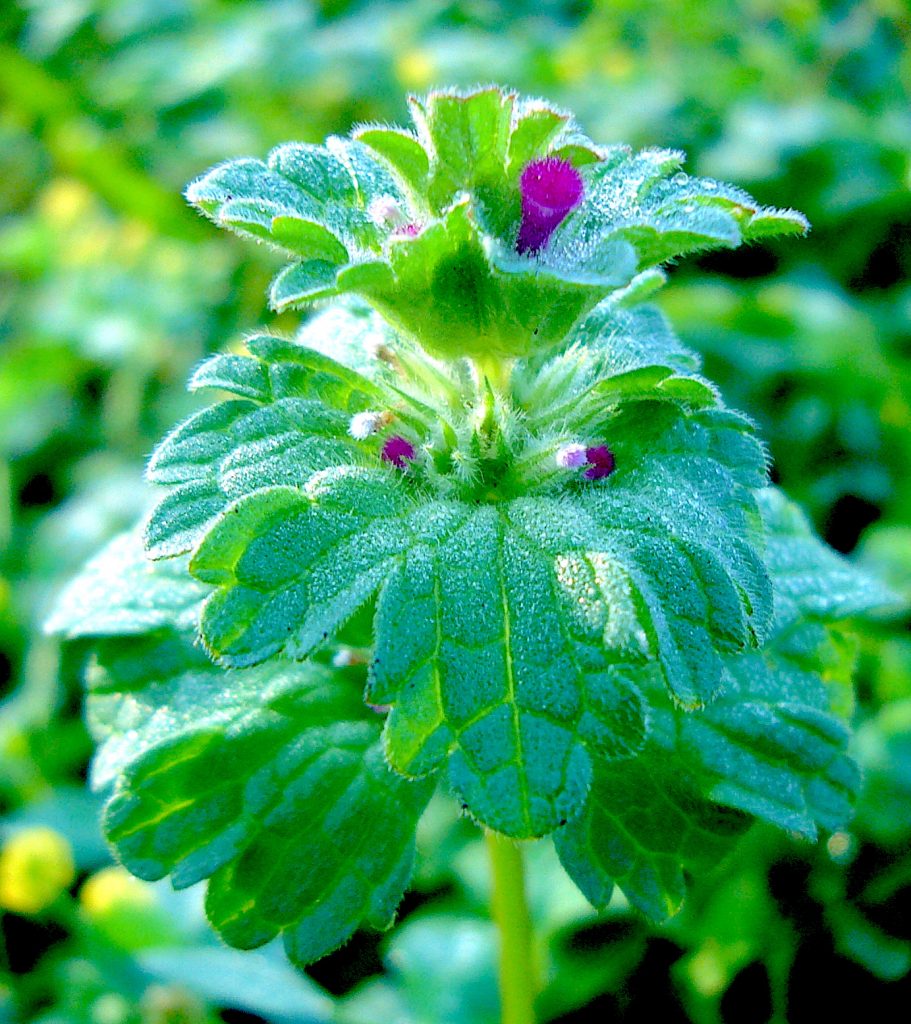
Henbit, one of the few “sweet” springtime greens. Photo by Green Deane
This time of year two wintertime foragables come up, one quite esteemed the other barely edible. They can at first glance look similar so I’ll mention them together. The first is Henbit, pictured above. It’s in the mint family but does not smell or taste minty. It does, however, have a square stem and the blossoms resembles the mints. In northern climates it is one of the first green plants to pop up after the snow goes (it and chickweed.) Locally Henbit likes the cooler months of the year. It was esteemed by the natives because among all the winter and spring greens it is not spicy but rather mild if not on the sweet side. What can be confusing about it is that the leave shape and stem length is different from young to old leaves. But, they all have a scalloped shape. It also has a similar looking relative that is also edible called Dead Nettle. You can see a my video about it here or read about Henbit here.
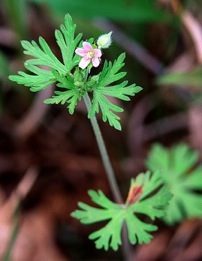
A Wild Geranium
Also found in lawns this time of year are wild geraniums, usually Cranesbill or Stork’s Bill. (Why one is one word and the other two-words possessive I do not know.) Botanically they are Geranium carolinianum and Erodium circutarium. Neither is great foraging. In fact both are more medicinal than edible but they seem to get mention in a variety of foraging books. The problem is they are extremely bitter. You might be able to toss a little bit of both in a salad but that’s about the extent of it. A possible look alike: If you have what you think is a Cranesbill or a Stork’s Bill but it has more of a bottle brush blossom than five petals you might have the non-edible Fumaria. It comes up this time of year and from a distance the leaves can remind one of the wild geraniums. To read more about them go here.
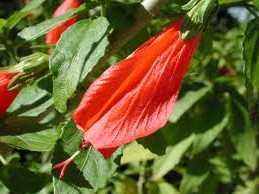
“Sleepy Hibiscus”
We saw several species blooming this past weekend in my foraging class. Among the Hibiscus was the “Sleepy Hibiscus.” It’s a fairly easy shrub to identify because the bright red blossoms never unfurl. The blossoms are usually slightly sweet. (Unlike man, Mother Nature does not have to make thing very sweet, just sweet enough to attract a creature.) Also blossoming was the Bauhinia. It’s a tree that is both easy and challenging at the same time. The blossoms are edible, look nice in salads. Some of the species have edible seeds and some do not. (They are in the pea family and most pea trees — most but not all — are toxic.) Sorting out which Bauhinia you have can be a challenge, nearly as bad as sorting out which Cereus you have. Like the Cereus cactus there are several man-made hybrids and perhaps even some fake botanical names. It can make species identification a real headache though as far as I know all the blossoms are edible. Only “discovered” 111 years ago the blossom of the Bauhinia blakeana is the emblem of Hong Kong. You can read about the Bauhinia here. By the way the Bauhinia blakeana is an example of a plant have two people’s name for the genus and the species thus it tells you nothing about the species.
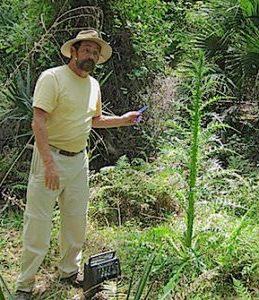
Foraging classes are held rain, shine, hot or cold. Photo by Nermina Krenata
It will be jacket time at the beginning of my foraging class in Gainesville this Saturday but should then warm up quickly. We might find some late season terrestrial mushrooms or some edible tree-dwelling fungi. Sunday’s foraging class in Winter Park will be warmer with a southwind, always a pleasant location and one I can leave at 8 a.m. to teach rather than the usual 4 a.m.
Saturday November 30th, Boulware Springs Park, 3420 SE 15th St., Gainesville, FL 32641. 9 a.m. to noon. Meet at the picnic tables next to the pump house.
Sunday, December 1st, Mead Garden, 1500 S. Denning Dr., Winter Park, FL 32789. 9 a.m. to noon. Meet near the bathrooms.
Saturday, December 7th, Red Bug Slough Preserve, 5200 Beneva Road, Sarasota, FL, 34233. 9 a.m. to noon. Meet at the play ground.
Sunday, December 8th, George LeStrange Preserve, 4911 Ralls Road, Fort Pierce, FL, 34981. 9 a.m. to noon. Meet at the parking lot. This is a rustic location without water or official bathrooms. Plan accordingly.
To learn more about the classes and location, to sign up for a class, or to pre-pay go here.
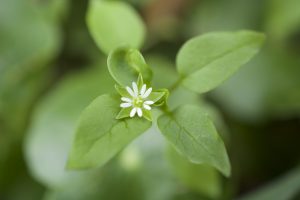
Chickweed has five deeply incised petals. Photo by Green Deane
Real chickweed will soon arrive. If you want to sample it in a variety of ways you have a couple of months at best. I usually find chickweed locally between Christmas and Valentine’s Day. It can be found earlier and occasionally after Valentine’s Day. But those two holidays mark the practical beginning and end of the local chickweed season. It also doesn’t grow much farther south than central Florida. In northern climates Chickweed is a green of spring. It actually germinates under the snow so it can get a head start on other spring plants. Snow spits here every half century or so and the ground never freezes which is why we can forage 365 days a year and why Morels don’t grow here. Chickweed is fairly easy to identify. Besides tasting like corn silk it has a stretchy inner core and one line of hair that runs along the stem switching sides at each pair of leaves. Don’t confuse Chickweed for a local cousin the edible, Drymaria cordata. To read more about chickweed click here and an aging video on it here. Also coming on strong is Pellitory. To read about Pellitory click here. I also have a video on Pellitory here.
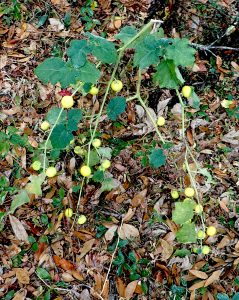
Carolina Horse Nettle. photo by Green Deane
No. It is not edible nor is it medicinal. Well… maybe it is medicinal, and if anyone says it is edible I ain’t going to try it. Locally you can see two different well-armed “Horse Nettles” this time of year, neither are proven edible as far as I know. Solanum Carolinense and it’s close relative Solanum Carolinense var. floridanum are definitely off limits. They are toxic. Each starts out with green and white fruit that turns yellow. There is also a thorny tropical import Solanum viarum. It’s fruit is red when ripe and is more iffy. Called the Tropical Soda Apple how it got to the United States is a good guess. Some think the seeds arrived in the intestinal track of cattle from South America (which suggest edibility of some sort.) A big problem is some members of this family grow more toxic as they age while others grow less toxic. There are reports of S. viarum being used medicinally for things like rheumatism, arthritis, and skin diseases. It does contain steroidal alkaloids. It has also poisoned cattle and sheep (which makes one wonder if it is that toxic to cattle why do they think it was imported in the dung of cattle? However, it might be that leaves and fruit have different toxicities. The poisoning could have come from leaves or green fruit while the ripe fruit seeds were just non-digested hitchhikers.)
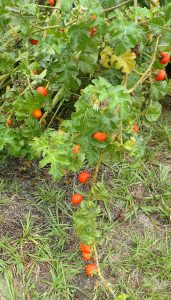
Tropical Soda Apple. Photo by Green Deane
Adding to the mystery is that about fifteen years ago ago I found an American university publication that listed the S. viarum as edible. Do not try to eat it because that is just too iffy for a plant that is also widely reported as highly toxic and fatal, especially the green fruit. I suspect the university botany department was just as confused regarding the identification of the plant as are others. What I wonder about is the ripe fruit. I’ve never seen any credible reference with the necessary details. What I would like to know is what if anything did Brazilian natives do with the plant? That could be a credible reference. Perhaps some of our Portuguese speakers can find that out. Indeed, on one Brazilian site it says (if the translation is to be trusted) “every child ate that fruit” and “consumption can only eat the skin with a thin layer of meat. The seeds are bitter and are not intended for consumption. The rind of the fruit can also be used in cooking, using it just like chili.” But… is it the same species? I am not going to try.
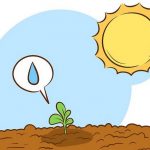 Donations to upgrade EatTheWeeds.com have gone well. Thank you to all who have contributed to either via the Go Fund Me link, the PayPal donation link or by writing to Green Deane POB 941793 Maitland FL, 32794. There are many needs left such as expanding the foraging teacher page, the page on monotypic edibles and the Plant Archive page. There’s always something and such things get more complex and expensive every year.
Donations to upgrade EatTheWeeds.com have gone well. Thank you to all who have contributed to either via the Go Fund Me link, the PayPal donation link or by writing to Green Deane POB 941793 Maitland FL, 32794. There are many needs left such as expanding the foraging teacher page, the page on monotypic edibles and the Plant Archive page. There’s always something and such things get more complex and expensive every year.
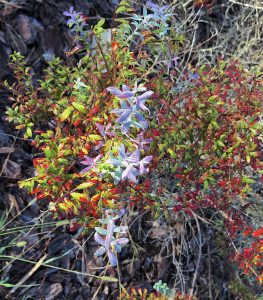
A very popular wild edible. Photo by Green Deane
Want to identify a plant or mushroom? Perhaps you’re looking for a foraging reference? You might have a UFO, an Unidentified Flowering Object, you want identified. On the Green Deane Forum we — including Green Deane and others from around the world — chat about foraging all year. And it’s not just about warm-weather plants or just North American flora. Many nations share common weeds so there’s a lot to talk about, such as the one to the left. There’s also more than weeds. The reference section has information for foraging around the world. There are also articles on food preservation, and forgotten skills from making bows to fermenting food. Recent topics include: California Wild Mushroom Parties, A Good Reason To Eat Wild Garlic, Black Walnuts and Amaranth, Sea Salt and Plastic, Wild Mustard? Heavy Metals. Oriental Persimmons. What is it? Pine Cough Drops and Needles, Skullcap, Malodorous Plant? Another NJ Tree, Maypop? Roadside Plant, Unknown in Sudan, Please Help Identify, and Preserving Prickly Pear Bounty. You can join the forum by clicking on the button on the upper right hand side of this page.
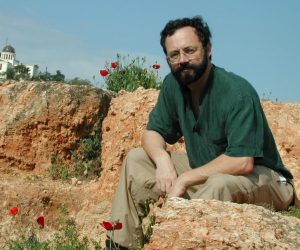
The Nine DVD set includes 135 videos.
All of Green Deane’s videos are available for free on You Tube and make a good Christmas Gift to watch in the long winter months. They do have ads on them so every time you watch a Green Deane video I get a quarter of one cent. Four views, one cent. Not exactly a large money-maker but it helps pays for the newsletter. If you want to see the videos without ads and some in slightly better quality you can order the DVD set. It is nine DVDs with 15 videos on each. Many people want their own copy of the videos or they have a slow service and its easier to order then to watch them on-line. They make a good Christmas or birthday gift. Individual videos can also be ordered. You can order them by clicking on the button on the top right of this page or you can go here.
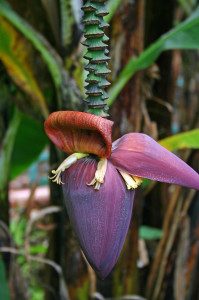 During a foraging class in West Palm Beach this weekend we saw Bananas blossoming. One doesn’t think of Bananas blossoming but they do, a large green and purple blossom that looks like a flower on steroids. The blossoms are edible raw but are usually cooked if not also soaked in salted water first. Chopped and boiled or steamed whole works. The inner pith of Banana trees is also edible as are the seeds of the species that have seeds. Banana water is also medicinal. The trick with Bananas, if one can call it that, is to watch the green bananas carefully. The moment one of the lower green bananas begins to ripen the entire hand is cut off and taken inside. There the Bananas usually ripen from the end up and most of them will ripen off the tree. If you leave them on the tree, a few will ripen and the rest higher up the hand will shrivel up. Unfortunately Bananas trees take two years to produce bananas and then die after producing. A cold winter can wipe out Bananas at the end of one year. Thus one needs two years sandwiching a warm winter to get home-grown bananas. As I sit on the temperate/sub tropical line some years I get Bananas in my yard, other years I do not. To read more about Bananas uses click here.
During a foraging class in West Palm Beach this weekend we saw Bananas blossoming. One doesn’t think of Bananas blossoming but they do, a large green and purple blossom that looks like a flower on steroids. The blossoms are edible raw but are usually cooked if not also soaked in salted water first. Chopped and boiled or steamed whole works. The inner pith of Banana trees is also edible as are the seeds of the species that have seeds. Banana water is also medicinal. The trick with Bananas, if one can call it that, is to watch the green bananas carefully. The moment one of the lower green bananas begins to ripen the entire hand is cut off and taken inside. There the Bananas usually ripen from the end up and most of them will ripen off the tree. If you leave them on the tree, a few will ripen and the rest higher up the hand will shrivel up. Unfortunately Bananas trees take two years to produce bananas and then die after producing. A cold winter can wipe out Bananas at the end of one year. Thus one needs two years sandwiching a warm winter to get home-grown bananas. As I sit on the temperate/sub tropical line some years I get Bananas in my yard, other years I do not. To read more about Bananas uses click here.
This is weekly newsletter 381. If you want to subscribe to this free newsletter you can find the sign-up form in the menu at the top of the page.
To donate to the Green Deane Newsletter click here.


I have never noticed our most common wild cranesbill (green stemmed filaree) as being bitter. Not sure which species we have